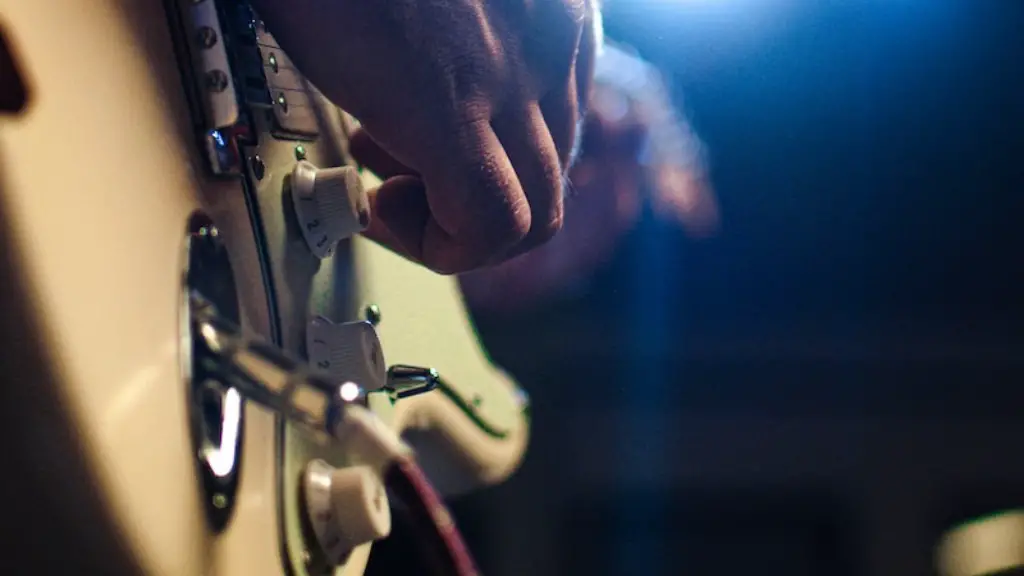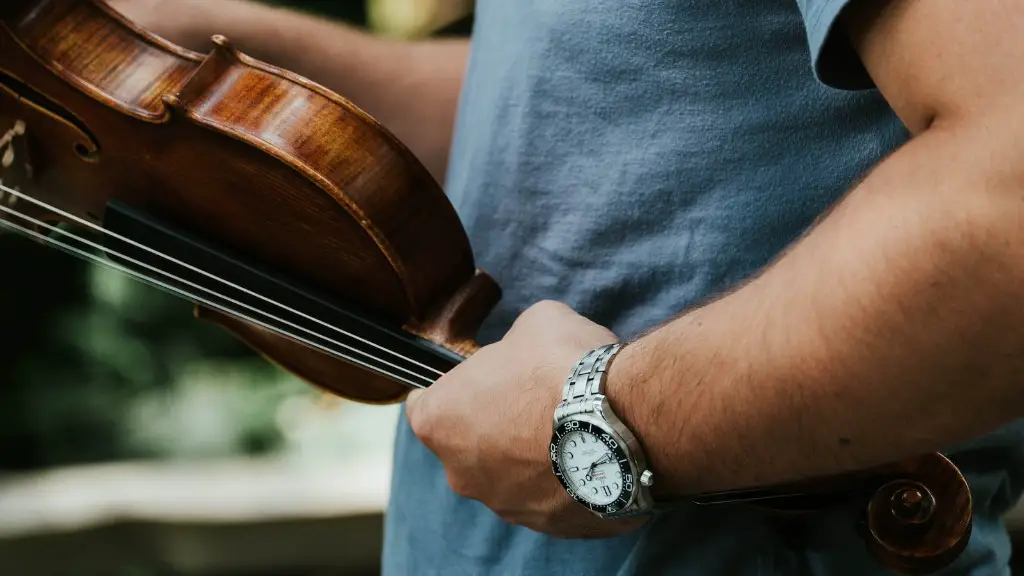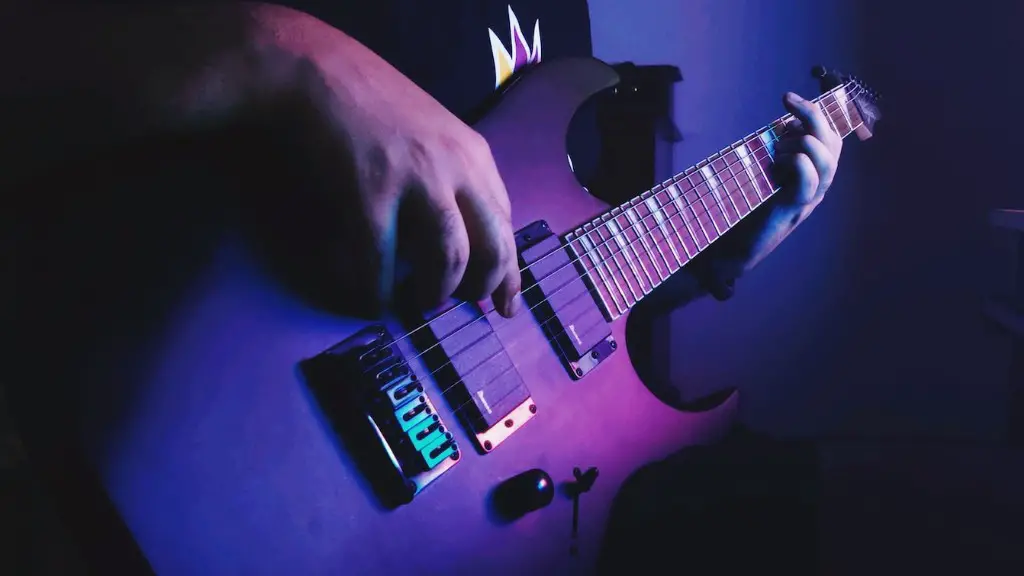Putting a pickguard on an electric guitar can be a simple and rewarding process. It involves removing the strings, loosening the screws, and carefully attaching the new guard. If done correctly, it can give your instrument a unique look and protect it from wear and tear.
In this guide, we will walk you through the steps for putting a pickguard on an electric guitar. We will also discuss some tips to make sure you get the best results. With the right tools and techniques, you can give your guitar an updated look with minimal effort.
So let’s get started!
Removing the Existing Pickguard
Removing a pickguard from an electric guitar can be a daunting task, but it doesn’t have to be. With the right tools and a little bit of know-how, you can easily remove the existing pickguard and replace it with a new one in no time.
First, you’ll need to gather up the necessary tools. You’ll need a small flathead screwdriver, a pair of wire cutters, and some tweezers. With these items in hand, you can begin removing the screws that hold the pickguard to the guitar body. Once all of the screws have been removed, carefully pry up each corner of the pickguard until it comes off. If there are any stubborn spots that refuse to come off, use your tweezers to gently pull them away from the body.
When all of the pieces have been taken off, it’s time to clean up any residue that may be left behind on the body of your guitar. Use rubbing alcohol or any other type of solvent cleaner that won’t harm your instrument’s finish. Once this is done, you can install your new pickguard and replace all of the screws back into place.
Removing an existing pickguard from an electric guitar isn’t as difficult as it may seem at first glance. With just a few simple steps and some basic tools, you can easily remove and replace
Measuring for a New Pickguard
Adding a pickguard to your electric guitar can give it a unique and customized look. To ensure that the pickguard fits perfectly, you’ll want to take accurate measurements before you purchase or install it. First, locate the bridge and measure the distance between the bridge and the edge of the guitar body. Next, measure the length and width of each pickup. Finally, mark the positions of any knobs or switches on the guitar body. Make sure to record your measurements accurately. This will help you buy a pickguard that fits properly.
To install your new pickguard, start by removing all strings from your guitar. Then, use masking tape to secure it in place while you drill holes for mounting screws. Finally, attach your pickguard with screws and tighten them securely with an Allen wrench or screwdriver.
Now that you’ve installed your new pickguard, enjoy showing off your custom look!
Tracing and Cutting the Pickguard
Adding a pickguard to an electric guitar can be a great way to customize your instrument and protect the guitar body from scratches. To install a pickguard, start by tracing the shape of the existing guard onto tracing paper. Then, transfer this image onto the new pickguard material with a pencil. Once you have a precise outline, use a sharp utility knife to cut through the material along the traced line. If necessary, sand down any rough edges for a clean finish. Finally, use adhesive to secure the pickguard to the guitar. With these steps you’ll be able to easily install new pickguards on your electric guitar.
Pre-drilling Screw Holes
Installing a pickguard on an electric guitar requires pre-drilling screw holes in the correct positions. This is a crucial step of the process, as it will determine how easy or difficult it is to attach the pickguard. The first step is to measure the distance between each screw hole and make sure that they are evenly spaced apart. Once you have marked these spots, use a hand drill with the appropriate size bit to make small holes in each spot. Be sure to drill straight down into the body of the guitar and not at an angle. This will ensure that when you attach your pickguard, it will be securely fastened.
The next step is to lightly countersink each hole with a countersinking bit. This will make it easier for screws to be inserted and provide a flush fit with the pickguard surface. Once all of your screw holes have been pre-drilled, you can move on to attaching your pickguard. Make sure to use the correct size screws and tighten them down using a screwdriver or power drill until they are secure.
Following these steps will ensure that your pickguard is securely attached to your electric guitar so that you can enjoy playing without worrying about it coming loose or falling off during use.
Attaching a Pickguard to an Electric Guitar
Attaching a pickguard to an electric guitar is a relatively easy process. You’ll need a few basic tools, including a screwdriver, and some screws to secure the pickguard in place. Start by removing any strings or other components from the guitar body that may interfere with the pickguard. Then, place the pickguard onto the body of the guitar and align it so that it is flush with the surface of the guitar body. Secure it in place with screws and another object such as a block of wood or a ruler, if needed. Make sure to tighten all screws securely. When finished, your pickguard should be firmly attached to your electric guitar.
For extra security, you may want to apply some glue between the pickguard and the body of your guitar before securing it with screws. This will help ensure that your pickguard won’t come loose over time. For most guitars, it’s best to use a high-quality adhesive designed specifically for attaching pickguards. Once your glue has dried completely, you can attach your pickguard using screws as mentioned above.
Always remember to tighten all screws securely when attaching a pickguard for optimal performance. With this simple guide, you’ll be able to quickly and easily attach your pickguard for improved aesthetics and sound quality on your electric guitar.
Securing the Cable Jacks
Adding a pickguard to an electric guitar can be a great way to customize your instrument. Pickguards come in a variety of colors and shapes, allowing you to express your own unique style. Installing a pickguard is a fairly straightforward process and requires only basic tools. Start by removing the strings from the guitar. This will make it easier to access the bridge and neck areas. Once the strings are off, take the pickguard and line it up with the body of the guitar. Make sure it’s in the perfect spot before securing it down with screws. If you’re using self-adhesive tape, make sure to clean off any dirt or dust from where it will be applied. Finally, connect any necessary wires or cables to their respective jacks before tightening down screws. Your guitar is now ready for playing with its new pickguard!
It’s important to take your time when installing a pickguard on an electric guitar, as you don’t want it crooked or misaligned from the body of the instrument. With patience and practice, you’ll soon have your own customized look for your electric guitar!
The Bottom Line
Putting a pickguard on an electric guitar is a simple, but time-consuming process. You’ll need to measure the guitar carefully and make sure you have the correct pickguard for your instrument before you start. Remove the old pickguard and clean off any residue before you begin to attach the new one. Make sure you have all of the necessary tools to secure it in place, including screws and washers. Be careful when drilling or screwing into your instrument, as any errors could easily cause damage. After everything is secure, your new pickguard will look great!





